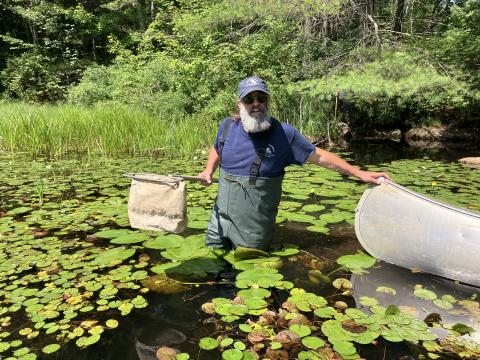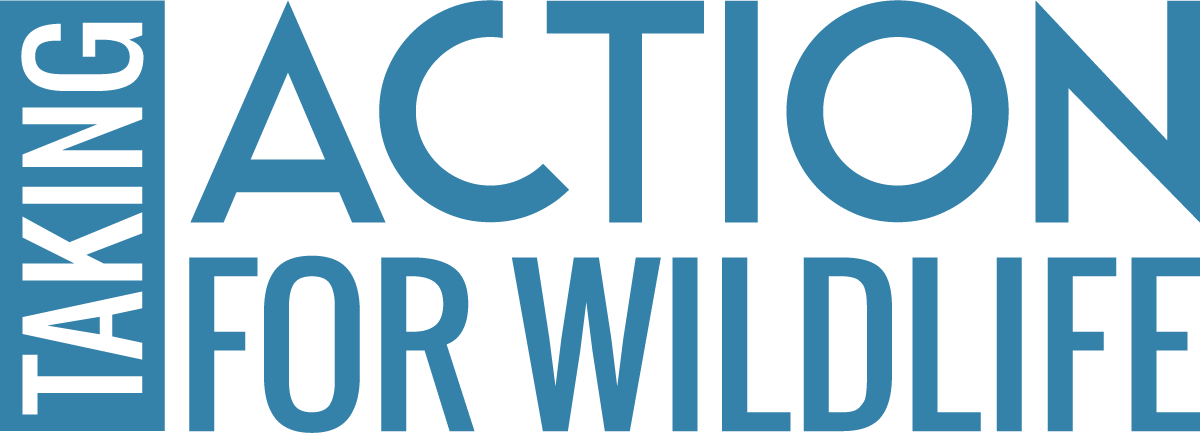Land-Use Planning for Wildlife
I sat down with Jeff Littleton, the principal ecologist with Moosewood Ecological, this summer to talk about his experience assisting towns who want to create local regulations that protect NH’s wildlife. Jeff is very enthusiastic about exploring our natural world and it shows in our conversation. While most of his work is in the field gathering data, he understands that fieldwork is the foundation for any regulation.
Q: As a natural resource professional, you are often on the ground identifying critical natural areas. How did you get involved in the land use planning side of things?
A: Land use planning has always been a part of what I do, and I simply look at it from a different lens. I look at this work through an ecology lense and I can recognize how important it is to include data in your natural resource inventory to help support your town’s goals for protection. The natural resource inventory is the foundation for any land use plan that uses data to support planning decisions. Early on, I recognized that there are other ways to protect habitat instead of simply land protection. Local regulation is a reflection of what the community wants for the future.
Q: What recommendations do you have for a town that wants to better protect wildlife through land use planning and local regulations?
A: A good way to get started is to conduct an audit of your existing zoning documents. Review your current regulations and identify concerns. Audits can identify towns strengths and weaknesses through a natural resource lens. Working with a natural resource professionals will provide the data to support conservation goals and help outline why an ordinance would meet community goals. When you are reviewing your current documents, check for a few things: Does it reflect the main concerns of the community? Are the resources listed the ones that your town is most interested in? How does your natural resource inventory connect to your conservation plan? Does it reflect your town's interest and goals (for example, protecting water and wildlife).
Q: How can commissions integrate wildlife protection into their Natural Resource Inventory and protect wildlife in their Master Plan?
A: The Master Plan is your overall policy guide, and your regulations provide the teeth to enforce the plan. Check your conservation plan and make sure it is reflected in your master plan. Identify what the Master Plan goals are and what they protect. Then look at areas and resources that are not protected through zoning but should be because they are highlighted in the Master Plan as important to protect. Explore the needs, concerns and goals as a community. Find out what needs the town has that are not addressed in regulations or the Master Plan. Think about the impacts from development should be addressed moving forward. It is important to listen to your community, identify what resources are critical, and what areas support those resources. It is also important to bring in a professional when developing a land use or Master Plan. Planners can help make the connections between human interest and wildlife.
Q: So many different zoning regulations can impact wildlife. How can a town ensure that local regulations are working in conjunction with each other?
A: Examine how regulations apply to wildlife across the board. Zoning fits together in pieces and using a land use planner is the best option for reviewing ordinances. Review what the town goals are and check your regulations to see how strong the language is to meet those goals. Does the ordinance contain broad or vague language that is hard to interpret? Use a broad brush at first and then work toward specifics that address your town’s concerns for the future. Often a variety of ordinances are needed to protect wildlife. Wetlands ordinances, aquifer protection districts, and stormwater ordinances will all protect wildlife habitat. Identify specific areas that drive habitat values and then develop a plan for protection.
Q: Do you have any tips for ensuring conservation and habitat protection is included as part of your town’s Master Plan?
A: Be more specific about goals and objectives and what you are trying to protect in your Master Plan. Bring to light the level of detail needed to support wildlife and articulate this in your regulations. Look at an ecological area like a watershed and pinpoint specific areas that would protect wetlands. Have data to support your decision to choose a conservation zone, buffer distance or setback. An arbitrary decision can be challenged. Without history or data to support a decision, it will be questioned in the future. Identify the conflicts between human and wildlife needs and create regulations that use information to support a planning decision to make it defensible.
Q: You have worked with many towns in NH. Can you tell me more about some of the more successful zoning regulations that protect wildlife?
A: Some of the most successful zoning regulations statewide include wetlands protection, and vernal pools protection. However, these regulations can be quite different from town to town. The most effective wetlands regulations include the protection of naturally vegetated upland buffers. This helps to mitigate some effects of land use. Upland buffers are necessary to help maintain good wildlife habitat and water quality while slowing surface runoff during heavy rain events in an effort to reduce flooding. The protection of adjacent vegetated buffers is a simple insurance policy that all communities should consider for natural resources protection for biodiversity and humans alike.

Jeff Littleton has been the principal ecologist with Moosewood Ecological and has more than 30 years of experience in ecological studies and environmental education. Moosewood specializes in conservation planning, land management and stewardship, habitat restoration/enhancement, and native plantings to promote biodiversity and ecological resilience on multiple scales. Jeff serves as an adjunct faculty at Antioch University where he provides course instruction on forest community ecology and interpreting our forested landscape. In addition, he is a member of the Cheshire County Cooperative Extension Advisory Board.


